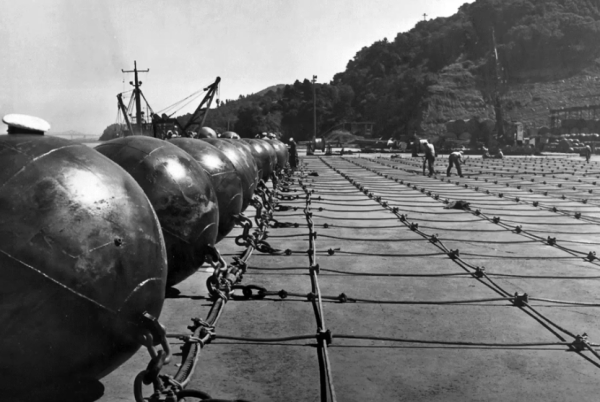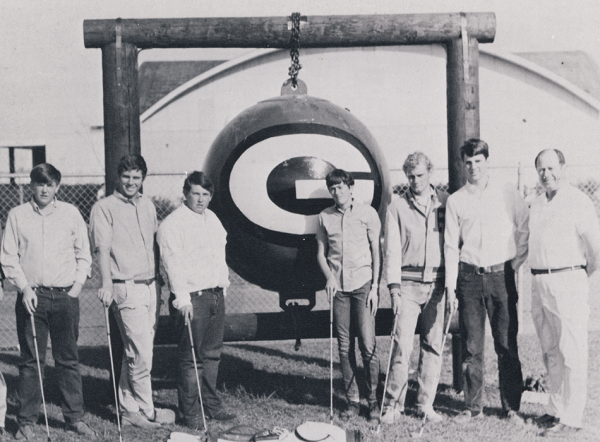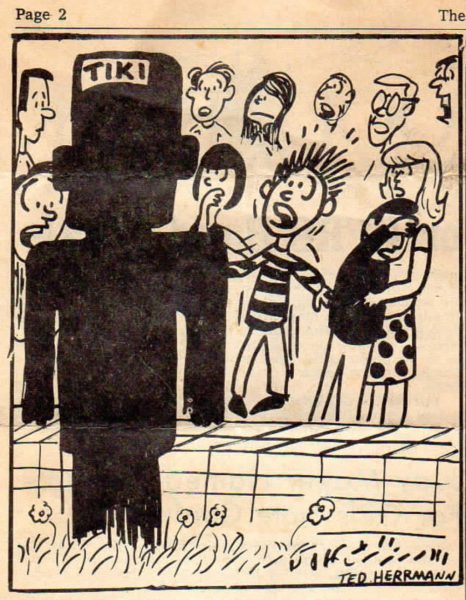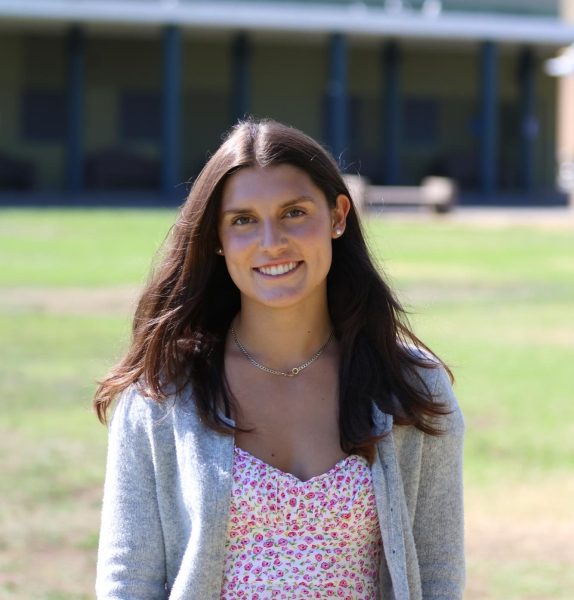Although formed later than many of the schools in the area, Redwood High School’s history is just as vibrant as neighboring Tamalpais, Archie Williams and Marin Catholic. Students have demonstrated school spirit by creating icons like the Spirit Ball and the quad’s Tiki. When Redwood opened in 1958, the surrounding area was very different. Only recently has the marsh been filled with landfill for development to support a growing Marin population. Marilee Rogers was a sophomore during the opening year of Redwood and graduated in 1961.
Looking back at the infrastructure, many of Redwood’s buildings today were still not yet constructed. In addition to the lack of two main buildings, the art buildings, Covered Eating Area (CEA), district offices, woodshop classrooms and many critical parts of Redwood were constructed only years later.
The original proposal for Redwood’s name was “Licatuit” after a local Native American tribe – similar to the Native American Prince Tamalpais – but the school faced community backlash due to the tribal origin of the name and concerns about potential obscenities during athletic events. The Board of Trustees ultimately rescinded the name and settled on Redwood, inspired by the romantic notion of the school’s location at the start of the highway through the Redwood Empire. Due to the marsh the school was built on, no Redwood trees were actually in the surrounding area until a portion of land was raised and Redwood trees were planted in front of the school. Unfortunately, due to the poor soil, the trees will never grow much taller than they are now. Named by the first class of Redwood, the newspaper, yearbook and weekly bulletin were also named following the school name, the “Bark,” “Log” and “Twig,” respectively.
Spirit Ball:
Spirit has been central to Redwood’s identity throughout its past. Part of our school’s spirit is demonstrated through sports and spectatorship. Richard Torney is a Redwood alumnus who graduated in the class of 1966.
“Whenever there was a rival game, many [students] would go. There were cheerleaders, song leaders and yell leaders and the gym was packed,” Torney said.

One distinctive symbol of Redwood’s spirit is the “Spirit Ball,” an icon that encapsulates our school’s vibrant energy. While some may see it as a simple metal sphere, its history is rich and profound.
The Spirit Ball’s origin story dates back to World War II. Initially, our beloved Spirit Ball was a buoy used under the Golden Gate Bridge to support large nets that kept submarines out of the bay. After the war ended, it was abandoned and forgotten and ended up in a quiet lot in Corte Madera, now occupied by Hertz Equipment Rentals.

The story of the Spirit Ball begins with the football team, which wanted an icon for the school to center its spirit around. After a suggestion from their coach, Bob Troppmann, the team drove to the lot and loaded the 672-pound buoy into Troppmann’s truck. Once at Redwood, the players brought the buoy to the metal shop teacher, Robert Flynn, who cut a hole in the bottom and painted it with the help of his metal shop students.
“It was originally painted red with the white Redwood G [for Giants] on the side,” Torney said.
The original plan was to place the Spirit Ball on top of a 8-foot telephone pole. However, after the project’s logistics and engineering were questioned, those involved later created a frame for the Spirit Ball. The frame was initially made from four sections of the telephone pole and a chain that hung the Spirit Ball from the top. This design was changed much later to its current rebar and cement base after a senior prank that moved and buried the Spirit Ball in the 1980s.
Since its addition to the school, the Spirit Ball has been a staple that students paint in the spirit of sports competitions. Like much else in Redwood’s history, the Spirit Ball is something students can form a community around.
Tiki Statue:
Have you ever walked into the quad and wondered why a giant Tiki statue exists? Many years ago, during the spring of 1966, the senior class debated what to donate to Redwood as their graduation class gift.
“We had money left over and somebody suggested we buy a new piece of equipment for the office. Then someone else said, ‘Let’s get a Tiki statue and put it in the quad’ because, at the time, it was a senior quad,” Torney said.



Sadly, the class of 1966 never got to see the infamous Tiki displayed in the quad, as they graduated before the Tiki was installed. A business in Sausalito, Tiki Junction, made the visions of the 1966 class come to life. Artist Barney West was dedicated to carving an 8-foot tall, 2-foot diameter Polynesian war god. However, this isn’t any traditional piece of wood.
“It’s made from the middle of [a Redwood] tree. It’s called All Heart Redwood. So our gift is All Heart Redwood for Redwood. There was some symbolism involved in the Tiki,” Torney said.
The current Tiki differs from the original due to considerable controversy in 1966 and 1967 over the Tiki’s male genitalia. Following this controversy, someone from the Tiki Junction modified and returned it, no longer making it an anatomically correct male.
From 1966 to 2004, the Tiki stood tall and proud in the courtyard for all to enjoy. However, in January 2004, Torney visited his beloved Tiki and noticed something was off.
“I was taking a night class at Redwood and during one of the breaks, I went to look at the Tiki when I found it lying flat on the ground and the bottom had rotted out,” Torney said.
Torney was dedicated to ensuring the Tiki was repaired to stand in all its glory. The next day, he enlisted the assistance of students to help put the statue on concrete blocks and store it in the classroom of woodshop instructor Joe Downey. However, it could not live there forever.

“At the beginning of the next school year, they said I had to do something with the Tiki, so I went out [to the woodshop] with some help from some classmates of mine,” Torney said. “We called it the Tiki Erection Committee.”
They then cut off all the rotten bottom and had an engineer help put the Tiki back up. They devised the idea of drilling holes in the legs, placing steel pipes and adding a concrete base to help the Tiki stand tall as it is today.
“I made a little form where the concrete comes out of the ground and if you look at it right in the front, you can see 1966 is embossed in the concrete,” Torney said.
Not only did the feet deteriorate over the years, but they noticed the top starting to fade away, leading the Tiki to wear a copper top hat. The Erection Committee still visits the Tiki every few years to keep it clean and apply a new layer of finishing plaster.
Future History:
Hidden in every nook and cranny of Redwood is 66 years of history that deserve to stay alive. The Tiki statue and the Spirit Ball are just two examples that only touch the surface of Redwood’s past. Those who once belonged to Redwood’s community — teachers and students alike understand the significance of maintaining our rich history to strengthen our community.
The archives of Redwood’s past, newspaper articles and yearbooks are all kept in a small corner of Redwood’s Bessie Chin library. It’s far from fancy; many probably didn’t even know it existed, less that they could access these archives. With the library being redone this summer, it is essential that history still has a place to live, as it contains information from past, current and future years.
The Alumni Association has been working on a display for the new library. They have also discussed other ways to display the history, such as exhibiting pieces of Redwood’s past.
“We’ve thought of having a box display case in front of the principal’s office, showing historical displays of different decades. Maybe one of the frames could have pictures that change so you can see Redwood at different times,” Rogers said.
This task would require significant human resources as it requires people to sort through most, if not all, archives, but in the long run, it’s worth it when it means Redwood’s history will stay alive. Next time you walk across campus, remember the rich history behind the Tiki statue, Spirit Ball and beyond, and remember that there is a significant history behind every piece of our campus.








